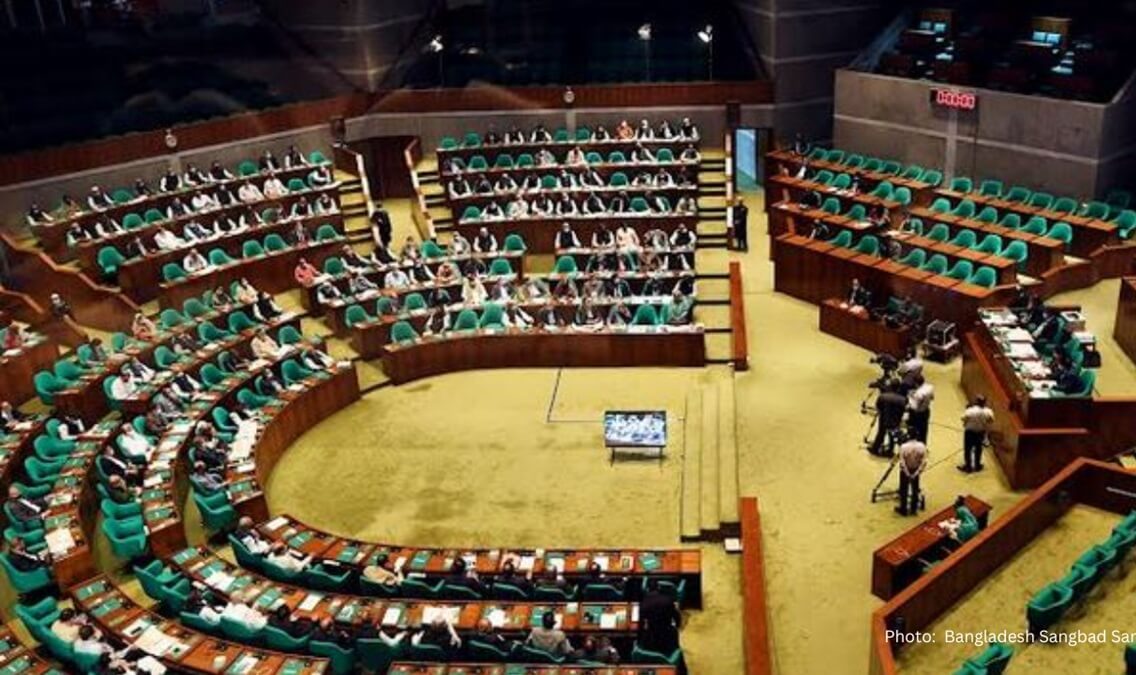12th National Parliament of Bangladesh: Real Scenario of Representation of Women in Politics
Sadia Tasneem | 08 April 2024
Equal participation and inclusivity of all in politics are key components to ensure good governance. Parliament is the salient area of representation of equity in politics. With 300 members, the Bangladeshi Parliament is a unicameral legislature. They are chosen by direct election using the first-past-the-post method in each constituency. Bangladesh, however, implemented temporary special measures (TSMs) to promote women's political representation, reserving a particular number of seats for women in all governmental spheres, both municipal and national. Convention on the Elimination of All Forms of discriminatory Against Women (CEDAW), which Bangladesh ratified in 1984, stipulates "these types of measures shall not be considered discrimination as defined in the present Convention." This is in line with that provision. The TSMs are not designed to be permanent, rather, they are meant to stay in place until women's representation can be assessed suitably without the need for special measures. While women are allowed to compete for regular seats in Bangladesh, the majority of female candidates choose to run for reserved seats as they are less difficult to win than general seats. Women running for reserved seats have the same options as men when it comes to running as independents or on party tickets.
Up to the Parliament's dissolution, which occurred 10 years after it was established, 45 seats were set aside only for female MPs under the terms of the Constitution (Fourteenth Amendment) Act of 2004. With a single transferable vote and proportional representation, these seats were chosen. Women could still run for office in the general election, notwithstanding the reserve.The fifteenth amendment, which went into effect on July 3, 2011, increased the number of reserved seats for women from 45 to 50.
Although the speaker,the leader of the opposition, and the Prime Minister, allare women, unfortunately there is no real representation of women in Parliament.Out of 300 seats, 20 women are directly elected in the 12th general election that was conducted recently.Despite this, fewer than 7% of women have been elected to parliament—not even double digits.There are now 50 seats set aside for women, making up a total of 20% of the delegates.16 of the 20 members of parliament (MPs) who are elected directly are affiliated with the ruling Awami League,and four are independent.Among the 25 ministers, only one woman and four women state ministers are part of the cabinet along with the Prime Minister.
Bangladesh has taken action to promote women's participation in politics by designating a certain number of seats for women at all governmental levels, including local and national. Local government plays a vital role in grassroots development by fulfilling local demands. Women's increasing involvement in political power structures and equitable access are pledged by the Local Government (Union Parishad) Second Amendment Act 1997.This amendment creates a framework for women to participate in political decision-making, encourages their engagement in grassroots leadership and local development, and reserves seats for women in municipal elections.However, there were pitifully few women in elected roles such as chairman and member of Union Parishads.Bangladesh is ranked 92nd in the world, with 20.3% of its MPs being female, out of 193 nations, according to data from the Inter-Parliamentary Union in 2018. In comparison to othercountries, Bangladesh is in a superior situation.
It is essential for women to participate in political processes in order to have a representative and democratic government. It makes community issues, resource distribution, and power hierarchies accessible. Women's engagement in local government is essential since it enhances their status on a grassroots level. Undeniably, women's empowerment in Bangladesh has increased throughout time, but more is still required, especially in the political sphere. Despite the fact that women have led the two largest political parties in the nation for more than 30 years, there are still very few women who have been elected to the legislature.
Sadia Tasneem, Research Assistant, Centre for Governance.
Views in this article are author’s own and do not necessarily reflect CGS policy.
